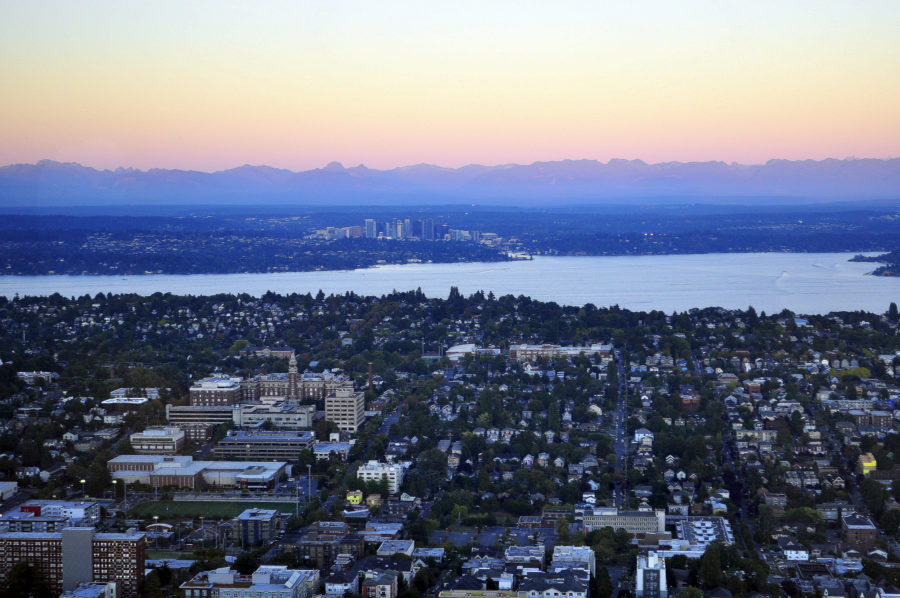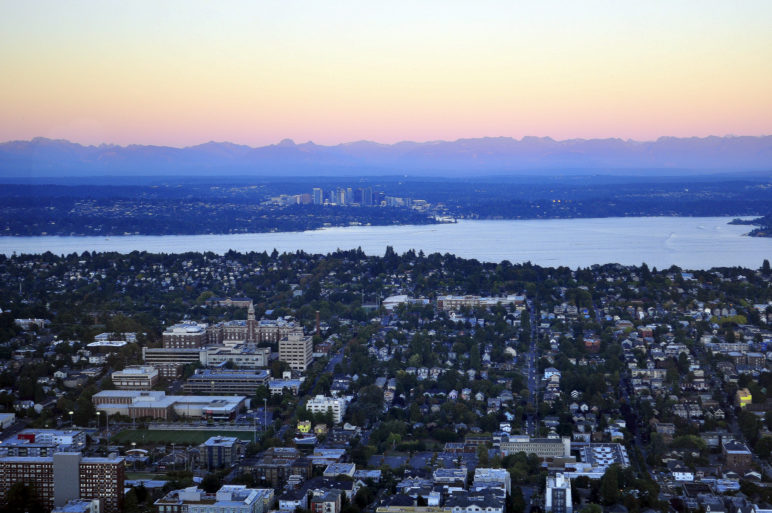Eric
I highly recommend Andrew Nikiforuk’s piece at the Tyee, where he spells out the findings of a deeply researched report on LNG projects in British Columbia. The analysis, by Voters Taking Action on Climate Change, shows that the province has startlingly few commonsense provisions to protect against terrorism, hazard zones, and numerous other risks posed by large-scale LNG production and shipping operations.
Seattle City Councilmember emeritus Nick Licata has published a guide on becoming a citizen activist. It’s a manual about how to engage with your community and be an effective advocate with local government. It should be required reading.
Alan
James Forman, Jr.’s new book Locking Up Our Own: Crime and Punishment in Black America may be the best complement and counterpart to Michelle Alexander’s The New Jim Crow yet written. Forman, son of two civil rights leaders from the 1960s and now a Yale law professor, has written a powerfully insightful examination of mass incarceration in the United States. Unlike Alexander’s book, which provocatively but somewhat simplistically argues that the phenomenon is a form of racist social control, Forman argues for a more nuanced and historical understanding of the United States’ conversion into a prison nation. Class joins race in playing a decisive role in his tale, as do particular trends in the drug trade, crime rates, and politics. Racism has a part, but it’s a complicated one. “Mass incarceration,” Forman writes, “is the result of small, distinct steps, each of whose significance becomes more apparent over time, and only when considered in light of later events.”
His book focuses in particular on Washington, DC, where he long served as a public defender. DC (where I also lived for some of the years he describes in the 1980s and 1990s) is a fascinating case study because it was and is a majority African-American city that throughout the period of mass incarceration’s emergence has been led by black politicians, policed by a majority-black and black-led police department, and judged (and lawyered and juried) mostly by African Americans. And still, Washington, DC, marched as swiftly toward mass incarceration as any other jurisdiction in the United States. By exploring this paradox, Forman reveals much that’s less visible in other books I’ve been reading this year on criminal justice (a personal project).
Locking Up Our Own is also sensitively crafted, carried along by profiles of people Forman defended as a lawyer and of various protagonists in the four decade drama: from once-Mayor Marion Barry to once-US Attorney for DC (and later Attorney General) Eric Holder. Highly recommended!
James Forman, Jr., will be speaking at Town Hall in Seattle this Tuesday, May 16. Unfortunately, Seattle is the last stop on his tour.
Keiko
In case you missed it in Sightline Daily this week, Matthew Desmond, author of Evicted, breaks down the ways homeownership is used as an engine of wealth inequity in the United States. He shows how an enormous entitlement in the tax code—the mortgage-interest deduction (MID)—props up home prices and overwhelmingly benefits the wealthy. Throughout the piece, Desmond humanizes the affordable housing shortage by sharing profiles of renters and homeowners that highlight the wealth discrepancy fueled by MID. I was shocked to learn that the average homeowner has 36 times ($195,400) the net worth of the average renter ($5,400). Public subsidies are actually helping those who own homes rather than those who are struggling to find stable housing.
As a renter in a booming city, this article hit me hard since homeownership seems farther and farther out of reach for me and my peers—an unattainable path to financial stability and upward mobility. Here are two excerpts from the piece:
A 15-story public housing tower and a mortgaged suburban home are both government-subsidized, but only one looks (and feels) that way. It is only by recognizing this fact that we can begin to understand why there is so much poverty in the United States today.
Because of rising housing costs and stagnant wages, slightly more than half of all poor renting families in the country spend more than 50 percent of their income on housing costs, and at least one in four spends more than 70 percent. Yet America’s national housing policy gives affluent homeowners large benefits; middle-class homeowners, smaller benefits; and most renters, who are disproportionately poor, nothing. It is difficult to think of another social policy that more successfully multiplies America’s inequality in such a sweeping fashion.
Here’s another housing reality from our neighbors south of Cascadia: a fully-employed math teacher with a master’s degree is homeless in San Francisco because of housing costs.
Dan
Over the past dozen years author Richard Florida has gone from cheerleading the creative class to issuing dire warnings about how successful creative class cities are at risk of becoming enclaves for the wealthy. Now, I haven’t actually read Florida’s new book, The New Urban Crisis (who reads actual books anymore???), about how “winner-take-all urbanism has deepened inequality, segregation, and poverty—and what cities can do about it.” Fortunately, though, the interwebs have been flush with more digestible commentary, including a series of adapted excerpts at CityLab, the online urbanism outlet Florida co-founded under the banner of the Atlantic Monthly. One such nugget caught my eye because it focuses on the fixes—after all, to us wonks it’s not news that booming cities such as Seattle are becoming victims of their own success because housing costs are out of control. And what really got my wonky juices flowing is that Florida’s recommendations—enact a land value tax; ditch the mortgage interest deduction; provide a basic income; build more transit—get at the structural roots of the problem. Also refreshing is that Florida recognizes that some popular prescriptions are more like band-aids: on rent control and inclusionary zoning, he writes, “while the aims of such policies are admirable, they can be costly and inefficient.”
Anna
Is walking an unrecognized wonder drug? That is, if we do a clever switcheroo in how people get around and how places are built, can a suburban life actually make Americans thinner rather than the opposite? We know (and feel) how sitting all day has a cost, as does a car-centric lifestyle where we shuttle from one activity (even athletic ones) to another rather than biking or walking. (Seattle scores as #2 most “sittingest” big US city, by the way.) As Americans ponder really serious policy questions dictating medical care and costs, healthcare insurance coverage, and pre-existing conditions, it’s also worth considering this:
Eight hours or more a day of sitting nearly doubles the risk of Type 2 diabetes and sharply increases risks for heart disease, cancer and earlier death, according to research from the University of Utah and the University of Colorado. The average American sits more than nine hours a day. Simply walking, on the other hand, is, as one former head of the Centers for Disease Control and Prevention put it, “the closest thing we have to a wonder drug.” That’s not hyperbole: the European Society of Cardiology found a 20-or-so-minute-per-day walk added an average of seven years of life. According to the CDC, more than one out of 10 premature deaths in the US can be pinned squarely on a lack of physical activity, along with more than one-tenth of health care spending. Walking leads to a 14 percent lower risk of breast cancer for women, an American Cancer Society study reported. A Harvard study found that brisk walking or equivalent exercise cut stroke risk in half. Adding in walking three days a week sharply boosted cognitive performance in older adults, a study in the journal Nature reported.
Of course, as the author points out, people drive in large part because their neighborhoods encourage it and sometimes even leave them with no other viable choice. What, then, if their neighborhoods were built to foster walking? Read more for a recipe (or at least the ingredients) for a more walkable place, including transit, safety, inviting commercial pockets in residential areas, and—to get there—different zoning choices.
Tune in to this short radio segment for an important reality-check on questionable terms that we use and hear when talking about people of color (but shouldn’t necessarily or should never, depending). Dr. Ralina Joseph, director of the University of Washington’s Center for Communication, Difference, and Equity, and UW graduate Sade Britt, had a frank conversation with Seattle’s KUOW Race and Equity reporter Patricia Murphy.
Paul Hawken identifies the top 100 things to do to stop climate destruction, by the numbers. He and a team of several dozen research fellows set out to “map, measure, and model” what actually works in several different scenarios, using only peer-reviewed research. The findings take us outside our usual (narrow) thinking about what is going to work (e.g., wind and solar—though they are part of it). Guess what’s top of the list? A combination of educating young girls and family planning (which, he found, together could reduce 120 gigatons of CO2 equivalent by 2050—more than on- and offshore wind power combined (99 GT).) He looks at other ideas from heat pumps to ride sharing to agricultural practices too. Dave Roberts talked to him about his new book, Drawdown: The Most Comprehensive Plan Ever Proposed to Reverse Global Warming.
Aven
This week, I learned that two of the ecological problems that I’m most concerned about—electronic waste (e-waste) and rainforest deforestation—may have powerful solutions in the near future. Researchers from Stanford have come up with a completely biodegradable platform for circuits. It’s environmentally friendly, non-toxic, and will hold up to high temperatures and immersion in water, yet fully disintegrates within 30 days when exposed to a mild acid. Besides potentially solving the 50-million-ton-per-year e-waste problem, the device also has potential applications to human medicine, in the form of absorbable skin patches or implants.
And in Brazil, where the farming of soy beans is largely responsible for forest loss, a new study has found that a 2006 moratorium on soy grown from newly deforested land seems to have been quite effective. Thankfully, the soy industry has decided to renew the soy moratorium indefinitely. Although deforestation is still an enormous problem, knowing this strategy worked for soy could lead to similar policies for other common crops grown in areas with high deforestation rates.
I also came across this blog post on maintaining momentum in difficult times, and this quote which I especially like:
Remarkable things have happened in the past, and this is our moment to step up and do remarkable things. The fact that we don’t know how it’s going to turn out is no reason not to dedicate our lives to ambitious change.










